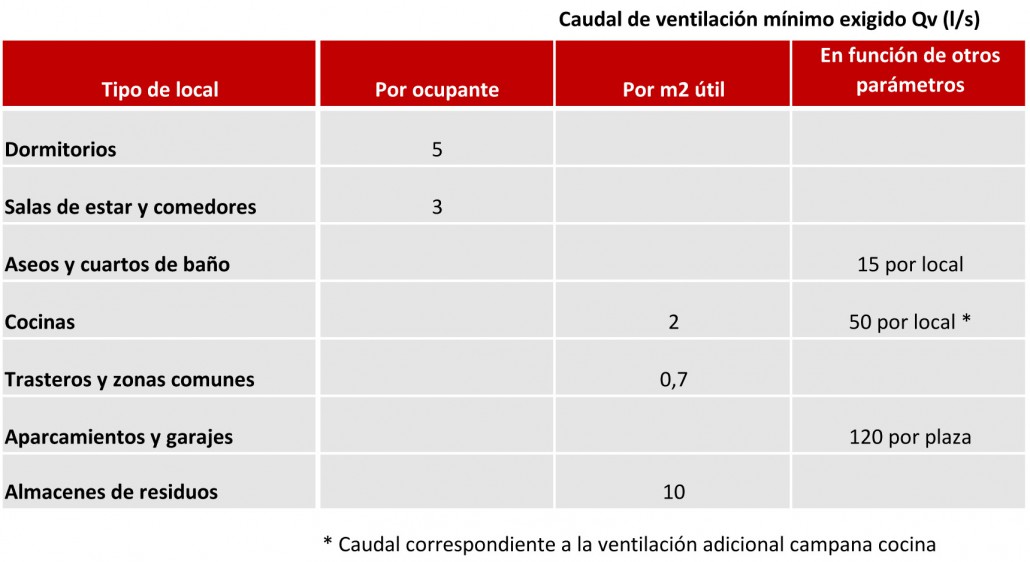Ventilation housing according CTE HS3
Sensitization by improving the quality in construction, the healthiness of occupied spaces and the promotion of energy efficiency and sustainability, are issues addressed in the CTE (Basic Health Document DB HS3). In it adequate ventilation with fresh air input required for dry areas (living rooms and bedrooms) and stale air extraction wetlands (restroom, bathrooms and kitchens)
Area of application
It applies to all residential buildings, Waste stores, storerooms, parking lots and garages (including circulation areas for vehicles)
mechanical ventilation and hybrid ventilation
Technical Code allows the implementation of a hybrid ventilation system or mechanical. Their implementation will select the most appropriate system and components:
- Dimensionado.Caudales minimum ventilation and sections of ventilation networks
- Type vacuum cleaners
- construction conditions of the ducts
- Maintainability of the elements of the system
The mechanical ventilation system offers greater simplicity, flexibility and greater precision and control of the ventilation parameters
Minimum air flows required for optimum ventilation of premises occupied are collected in the following table
The number of occupants is considered equal to:
- One for each single bedroom
- Two for each double bedroom
- The sum of all bedrooms in dining and living rooms
Mechanical ventilation exhaust ducts
The sizing of the exhaust ducts are made based on a maximum speeds of 4 and 6,67 m / s depending on whether the ducts that run through habitable zones or ducts do it for cover . Sections obtained are at least:
Ducts walking by habitable zones S(cm2)≥ 2,5. Qv (l/s)
Walking by covered conduits or risers S(cm2)≥ 1,5.Qv (l/s)






